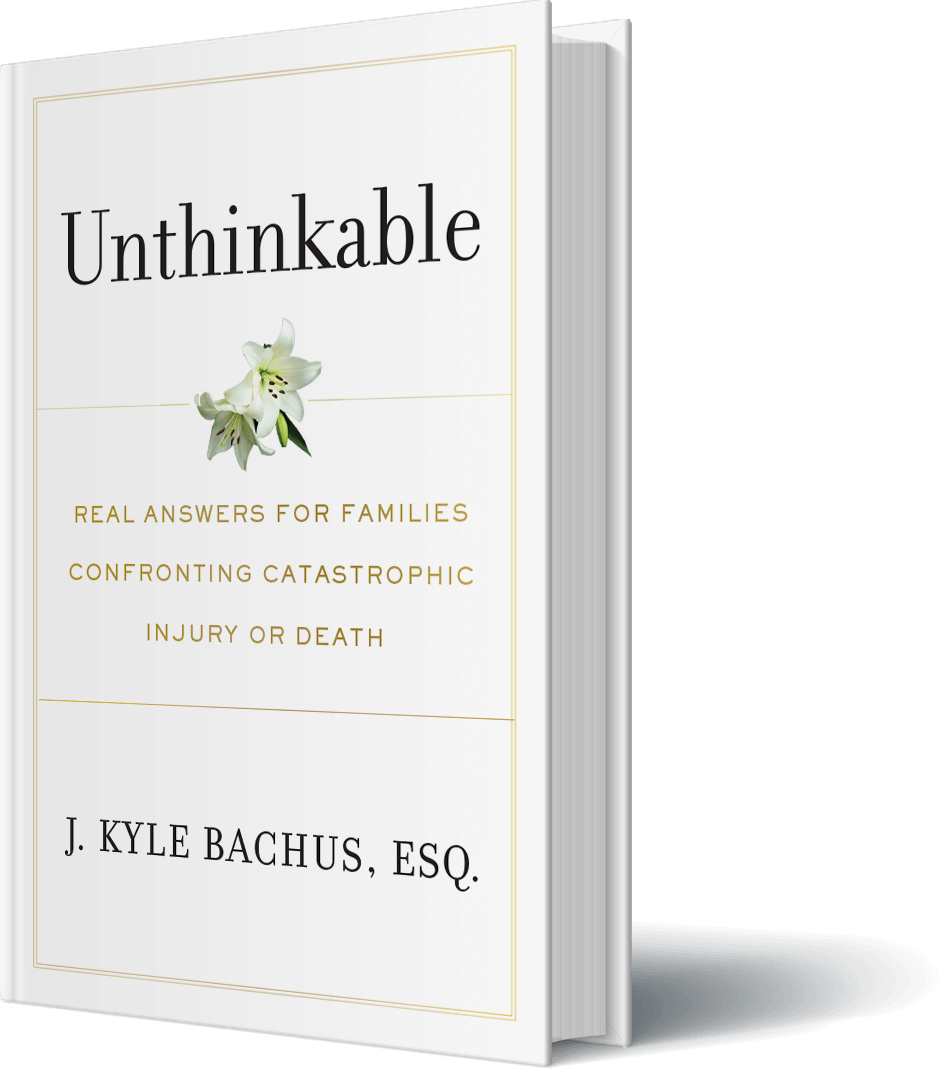- What is the burden of truth in a civil case?
- What is the burden of truth in a criminal case?
- What is clear and convincing evidence vs. proof?
- Bachus & Schanker's Victim Advocate Team
- How much will it cost me to open a lawsuit with your firm?
- Who bears the burden of truth?
- Who bears the burden of proof in an insurance claim?
- What is the burden of proof in a preliminary hearing?
- Trust your legal case to Bachus & Schanker
- CHECK OUT MORE VIDEOS IN OUR LAW 101 SERIES
Burden of Proof

You may have heard the legal term “burden of proof.” It’s also known as the burden of truth and is defined as “the obligation to establish a contention as fact by evoking evidence of its probable truth.” In legal language, the Latin term is onus probandi, which means the person who makes a legal claim (plaintiff) must show the proper evidence to support their claim.
As a plaintiff in a civil case, you don’t have to know all the legal terminology. But you should understand how crucial it is for your legal team to prove the burden of truth. We are Bachus & Schanker, personal injury lawyers, who will explain in detail what the burden of truth means when you file a legal claim after a car accident.
What is the burden of truth in a civil case?
The burden of truth is a clear demonstration of the preponderance of evidence. Think of it as a set of scales where it has to be shown through factual evidence who and what caused your injury, with the scales tipping the majority of the weight toward the truth of the matter. If the scales are tipping in your favor at 51% or more, you have shown the judge and jury you are right. Your case will prevail in court, and your rights to financial recovery against the defendant will be met.
What is the burden of truth in a criminal case?
The threshold to prove the burden of truth in a criminal case is higher than in a civil case. The prosecutor has to demonstrate beyond a reasonable doubt that the defendant (person charged with a crime) is guilty. It will be up to the judge and jury to determine the guilty verdict which can result in jail time and hefty fines for the defendant. If the evidence isn’t presented to move past doubts about the culpability of the defendant, then the jury would be obligated to return a not-guilty verdict. That’s why it’s crucial to get the evidence lined up in clear and convincing detail with expert witnesses and all surrounding facts of the case for the judge and jury to hear.
What is clear and convincing evidence vs. proof?
The evidence gathered in a legal lawsuit is all the information from police and medical reports to eyewitness accounts and expert testimony. All of the evidence has to be presented to follow the law in a clear and convincing manner. That’s why hiring an attorney who specializes in this type of personal injury law is key to building your case. A personal injury lawyer can study all the facts and present to the court the proof of logical conclusions derived from the facts to win your case.
Bachus & Schanker’s Victim Advocate Team
At Bachus & Schanker, we take it a step further by providing our clients with an assembled group of Victim Advocates. What does this mean for you? It means we care about how you have been affected by the trauma of a severe car accident, wrongful death, sexual assault, or catastrophic injury. We know how hard it is to relay the information about such an injurious event you may have experienced.
We bring in professionals from the judicial system and law enforcement who deeply understand the legal process and are there to empathetically support the victims in their time of need. They will help you gather the required information to recount your story. They will act as the liaison between the family and the prosecutor’s office. It’s an added benefit we provide separately from other law firms.
How much will it cost me to open a lawsuit with your firm?
We don’t charge you upfront fees because our fees are calculated when we win your case. So there is no risk to you or your family to call us and schedule a free 45-minute consultation interview with our legal specialists. Everything is kept confidential, and it will be our privilege to review your case. We keep in contact with you throughout the course of the case and apprise you of what is happening and when. We want you not to worry and focus on your healing as we go forward with the evidence presenting the burden of truth.
Who bears the burden of truth?
The person who starts the legal claim by opening a lawsuit with the help of a law firm is the plaintiff. The plaintiff must bear the burden of truth and prove their right to compensation in a civil case. In a criminal case, the burden of truth rests with the state who files the criminal defense claim.
The burden of truth can shift throughout the proceedings between plaintiff and defendant based on the burden of production and persuasion. Those two elements provide the cornerstones to meet the legal element of truth.
- The burden of production is based on the issue of law and requires the plaintiff to produce enough evidence to satisfy legal standing. If there isn’t enough evidence, the judge can dismiss the case.
- The burden of persuasion requires fact-based evidence to be presented as truth. A judge cannot dismiss a case if the persuasion burden is unmet.
It can be a complicated legal process, but we are here to help you through it.
Who bears the burden of proof in an insurance claim?
You may be wondering what happens when an insurance company wants to settle a legal claim out of court by offering the plaintiff a sum of money. The amount of financial compensation will depend on the insurance policy limits and how the burden of proof is presented in the claim.
Often, an insurance company knows that settling outside of court will be at a lower cost to them than if they go through a prolonged court trial. Your personal injury lawyer will know what is best to do in that situation. They will either negotiate for a higher amount or go to trial in order to win you the highest amount possible.
What is the burden of proof in a preliminary hearing?
A preliminary hearing is held in a criminal case. It is not to prove if the defendant is guilty or not guilty, but rather if there is enough evidence to make the defendant stand trial. The Fourth Amendment allows the police to meet the legal definition of “probable cause” with evidence that a crime has been committed, and therefore, an arrest be made.
Presenting the probable cause to the court in a preliminary hearing ensures that it is a valid and legal claim, thereby protecting the defendant from unfounded or baseless charges. The judge determines from the burden of proof that a crime has been committed by the defendant and can proceed with a trial.
Trust your legal case to Bachus & Schanker

As you have learned, the burden of truth in a civil or criminal case builds the basis of the proof of the legal claim. It clearly answers the who, what, where, and why questions with factual evidence required for assembling a lawsuit to be filed in court. It will determine who is guilty as charged and who is remunerated for damages suffered in a car accident or any other type of severe injury accident.
Over the decades, Bachus & Schanker have litigated numerous car accident and personal injury cases in the Colorado court system. Our depth of knowledge and breadth of experience have taught us how to fight and win for our client’s legal rights. We can do that for you, too. We’re only a phone call away to start your legal claim today.
Sources:
Burden of persuasion. (2022).
Burden of production. (2022).
Liberto, D. (2023). Reasonable Doubt: Definition, How to Prove, and 3 Burdens.
Onus probandi. (2023).


